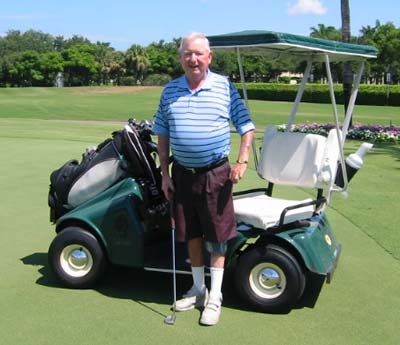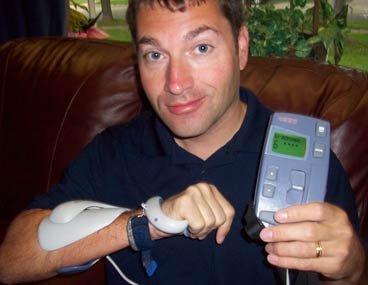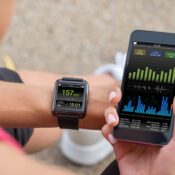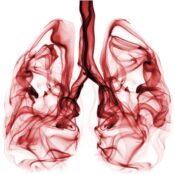In the final installment of this two-part series, experts discuss innovative approaches that help stroke survivors restore their communication skills and move independently to accompany the May 2010 Post Investigates feature: “Stroke Advances,” by Anne Underwood.
“A major stroke can change everything—the ability to speak, to move, to work,” says Dr. Walter Kernan, professor of medicine at Yale University School of Medicine, in the Post article. “It may seem to rob a person of his life without actually taking it.”
Fortunately, advances in the field of rehabilitative medicine are helping stroke victims regain their ability to walk and talk with family, friends, and co-workers.
Specialized Speech Therapy
Doug Gillis, 44, owner a softball academy in Michigan, had a stroke in 2006 that left him with aphasia, a language disorder that affects about one million Americans.
People with aphasia cannot always speak the words that they want to say. Some with the disorder also have trouble understanding others, or find it difficult to read or write. It does not affect intelligence. Stroke is the leading cause of aphasia. But brain tumors, infections, and head injuries, among other conditions, may be to blame.
Gillis said his first word one week after the stroke, and his first sentence eight weeks later. He then enrolled in The University of Michigan Aphasia Program (UMAP) <http://www.aphasiahelp.com/>, and made significant progress.
“We take a unique approach to aphasia therapy,” explains Annie Kennedy, M.A., CCC-SLP, Associate Clinical Services Manager, UMAP, “and provide an individualized therapy program with a limited number of clients to ensure a high ratio of staff-to-clients for the most direct and effective one-on-one treatment.
“Our key distinguishing factors include: a six-week intensive therapy program, clinically trained professional speech language pathologists, and an approach that incorporates caregiver education and support. The UMAP is the oldest program of its kind for the treatment of aphasia in North America.”
Today, Gillis is back at work and often speaks before large groups of students, athletes, and coaches.
“It was overwhelming to learn language all over again and frustrating when I couldn’t find the words I wanted to say,” Gillis said. “But, with time and patience, and a good team of experts helping me at UMAP, I regained a high percentage of my language abilities.”
Physical Therapy Breakthrough
A wearable device system from Bioness http://www.bioness.com/Home.php called the NESS delivers mild electrical impulses to the arm or leg and helps stroke survivors move again—offering hope even to those who suffered strokes years ago.
The FDA-approved NESS L300 consists of a small transmitter worn in the shoe that sends electronic signals to a device strapped below the knee. When the person attempts to walk, mild impulses stimulate the peroneal nerve in the leg, prompting under-active muscles to lift the foot off the ground. The NESS H200 works in a similar way to improve hand function and mobility.

Bill Hefferon, 73, of Naples, Florida, was unable to walk on his own from his bed to the bathroom after suffering a stroke 10 years ago. But within months of starting therapy with the NESS L300 in 2008, Bill no longer needed a cane and was back on the golf course.
“Using the NESS L300 has increased my stability and stamina” says Hefferon. “Now, I can golf and go dancing with my wife again, something we enjoy doing together.”
At age 7, Joe Breiner of Wauwatosa, Wisconsin, had a stroke that immobilized his left arm and leg. Today, the NESS H200 enables the 40-year-old husband and father of two to open and close his hand.
“The Bioness H200 has provided me with hope,” says Breiner. “Since I started using the device, I can perform many daily functions that before were a real struggle for me. The H200 is not a magic cure—it takes hard work and dedication for users like myself to see results. But through hard work and the will to recover, great results are attainable.”
“The Bioness devices may help those who suffer from leg and hand mobility issues to gain back movement and independence,” explains Michael W. O’Dell, M.D., Chief of Clinical Services, Department of Rehabilitation Medicine at New York‑Presbyterian Hospital‑Weill Cornell Medical Center and Medical Director of the Inpatient Rehabilitation Medicine Center. “These devices are appropriate for individuals experiencing neurological conditions including stroke, traumatic brain injury, spinal cord injury, multiple sclerosis, and some types of neurological cancers.
“Persons who have retained at least some degree of voluntary movement in their muscles may have a better chance of success with Bioness devices.”
Become a Saturday Evening Post member and enjoy unlimited access. Subscribe now




Comments
re: my previous post….should read:
*prohibative cost
I have been a caregiver for a 37 year old stroke survivor for the past ten months. In addition to his full time job as a purchaser/buyer, Mark was also a drummer. After using the Bioness Ness H200 in outpatient therapy, his occupational therapist recommended obtaining the device for home use. Her recommendation was back in January of this year. After multiple denials by Mark’s insurance company to cover the cost of the device (they consider it to be investigational), as well as a denial by the Department of Occupational and Vocational Rehabilitation (our case worker advised that a different office of OVR has approved this item in the past), we are left with the frustration and dissapointment of not being able to readily obtain this device because of the prohibative could. (July 24 will mark the one year anniversary of the stroke that almost claimed Mark’s life. To date he walks with a brace on his left leg, has some movement of his left arm, but has little to no movement in his left hand. His occupational therapist feels there is potential movement in his arm and hand that is being over-ridden by the tone in his arm. Pending insurance approval, Mark will receive Botox in his arm in early August. Hopefully, this will reduce his tone, allowing for more movement in his arm and hand.) Being people of a strong faith, we continue to move forward, trusting in what God has planned for Mark’s recovery, doing everything we are able to do in that process.
Aren’t we overly “streamlining” the language when we say “Stroke Advances” and not “Stroke Treatment Advances” or “Stroke Therapy Advances?”
Shouldn’t language be as precise as we can make it?
Apologies to all if, by making this point, I–in any way–appeared to diminsh the vital content of the article.